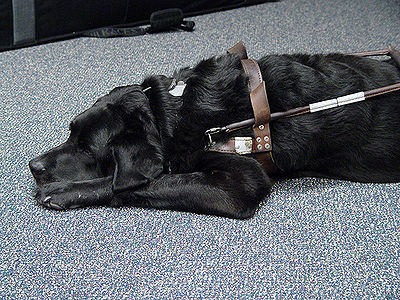
Guide dogs are assistance dogs trained to lead blind and vision impaired people around obstacles. They are led by their human owners and help them get where they want to go safely.
Guide dogs are mentioned in literature as early as the sixteenth century but the first guide dog training schools were established in Germany during World War I to help blind war veterans.
Golden Retrievers, Labradors, and German Shepherds are the most popular breed trained as guide dogs, but other breeds are used as well: Yorkshire Terriers, Poodles, Collies, Vizslas, Dobermans, Rottweilers, Boxers and Airedale Terriers.
Anyone with sight loss could benefit from guide dog ownership and many guide dog owners aren’t formally registered as blind or partially-sighted. You don’t need to have lost all your sight and most people who own a guide dog still have some vision. A certain level of maturity is required to work with a guide dog, so some training schools require the human to be at least 16 years old. There is no upper-age limit.
Guide dogs are raised by families called Puppy Raisers and when they are about a year old, are trained for four to six months with an instructor and another four weeks with their blind master. Guide dogs can go almost anywhere a human can go but they can’t interpret traffic lights since they are partially color-blind and don’t distinguish between red and green. They are trained not to cross a street if there is traffic.
Roughly 10,000 people use guide dogs in the US and Canada. Many countries allow guide dogs into restaurants and other public places where dogs are usually not allowed.
Guide dogs are also pets. When they are wearing a harness they are on duty and should not be distracted. When the dog is not working, its owner can take off the harness and play with and pet it.
Related articles:



